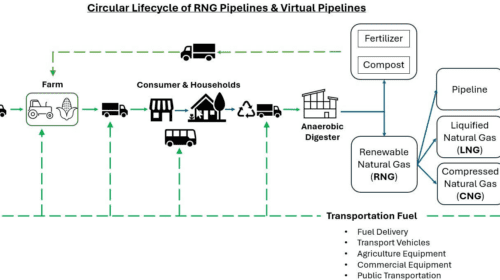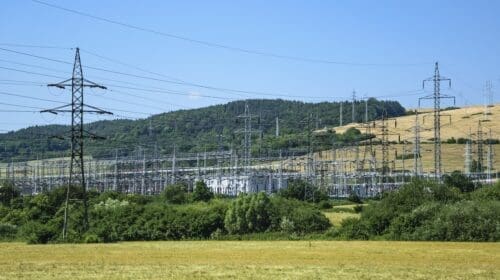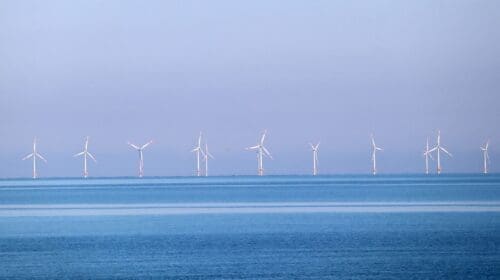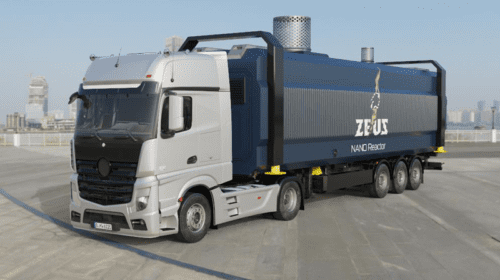Through funding made possible by the Bipartisan Infrastructure Law (BIL), the Department of Energy’s Regional Clean Hydrogen Hubs (H2Hubs) will catalyze a framework of producers and consumers of hydrogen with an infrastructure system that supports the production, storage, delivery, and end-use of clean hydrogen. With a focus on producing clean hydrogen power at the commercial level, H2Hubs is looking to generate clean power and create a new outlet for energy storage. To accomplish its goal, the Office of Clean Energy Demonstrations looks to a series of hubs awarded to specific groups to begin making the dream a reality.
Through a group effort, H2Hubs expects to reduce 25 million metric tons of CO2 emissions from the end user annually. For perspective purposes, this roughly equals the yearly emissions of 5.5 million cars outfitted with the internal combustion engine. In the process, the health of communities will be improved and sustained by creating more than ten thousand new jobs.
To be considered for the award designation, each hub had to produce a work plan listing the speed at which hub operations were possible and specific details on how it would be managed. Additionally, a management team and project partners were required to be identified. With such a positive impact expected on society, each hub must produce a community benefits plan that identifies an interpretation of how the community and the labor force will engage. To meet those healthy community and job creation standards, each hub must explain its workforce development plan and how it will address the diversity equity inclusion requirements and the Justice40 Initiative.
Award Winners
- Appalachian Hydrogen Hub: The Appalachian Regional Clean Hydrogen Hub (ARCH2) will span West Virginia, Ohio, and Pennsylvania with a federal cost share of $925 million. It will target the area’s natural gas supply to produce clean hydrogen and permanently store carbon emissions. The hub projects an annual CO2 emissions reduction of 9 million metric tons annually. The hub will additionally support the creation of 18,000 construction jobs specific to the project and 3000 permanent jobs after construction is completed.
- California Hydrogen Hub: The Alliance for Renewable Clean Hydrogen Energy Systems (ARCHES) Hub will reside only in California but will draw $1.2 billion in federal funding. It will draw upon the state’s superior clean energy technology to produce hydrogen from renewable and biomass energy sources alone and focus on decarbonizing the public transportation sector. The hub plans to reduce emissions by 2 million metric tons annually. While the project will create 130,000 jobs during construction, the surrounding communities will benefit from 90,000 permanent jobs available upon completion.
- Gulf Coast Hydrogen Hub: The HyVelocity H2Hub has selected Houston as its central focal point but will span across Texas, taking advantage of $1.2 billion in federal funds. This regional hub plans for hydrogen production on a large scale, which will be made possible through natural gas with carbon capture as well as electrolysis powered by renewables. The Gulf Coast Hydrogen Hub plans to sequester carbon in slat dome caverns, open a large pipeline, and develop numerous hydrogen refueling stations, all while reducing emissions by 7 million metric tons per year. The hub will provide 35,000 construction jobs and 10,000 permanent positions.
- Heartland Hydrogen Hub: Heartland Hub (HH2H) will develop its hydrogen hub in North and South Dakota and neighboring Minnesota. Utilizing $925 million in federal dollars, the group will seize the benefits of abundant energy resources in the area and assist the agricultural sector with decarbonization, specifically in fertilizer production. Development will also be pointed at the use of hydrogen in the utility sector. The group’s initiatives are expected to rid the planet of almost one million metric tons of carbon annually. The Heartland Hydrogen Hub project hopes to provide 3,880 jobs, with 3,067 being in construction and the remainder being permanent roles.
- Mid-Atlantic Hydrogen Hub: The Mid-Atlantic Clean Hydrogen Hub (MACH2) will follow a unique path and direct its attention to repurposing existing infrastructure and utilizing existing rights-of-way to provide hydrogen-based decarbonization. With $750 million in federal funding, renewables, and nuclear energy will be the source of new renewable hydrogen production facilities. While providing the ability to rid the planet of one million metric tons of carbon, the hub will provide 14,400 construction jobs and 6,400 full-time roles.
- Midwest Hydrogen Hub: The Midwest Alliance for Clean Hydrogen (MachH2) hub encompasses an area that touches Illinois, Indiana, and Michigan. It will concentrate on enabling decarbonization through hydrogen in producing steel and glass, power generation, refining, heavy-duty transportation, and sustainable aviation fuel. By successfully decarbonizing these areas of interest, the Midwest Alliance for Clean Hydrogen expects to reduce carbon emissions by approximately 3.9 metric tons annually. It will create 12,100 construction jobs and an additional 1,500 permanent positions.
- Pacific Northwest Hydrogen Hub: The PNWH2 Hub will call upon its $1 billion federal funding share to produce hydrogen only through electrolysis across Washington, Oregon, and Montana. The hub will drive the costs of electrolyzers down significantly through its abundant use. It expects to sequester 1.7 million tons of CO2 emissions annually and provide 350 new job positions. PNWH2 Hub additionally forecasts 8,050 jobs becoming available for the construction phase.
While covering a strategic geographical footprint across the United States, each hub will significantly contribute to reducing harmful greenhouse gas emissions. Each provided a plan to ensure they were capable of meeting expectations. With a cleaner and healthier future desired, awards were mainly based on the capability and capacity of each hub’s emission reduction plan. As the program moves forward, the public can expect to benefit from one of the most significant clean energy initiatives put into action.
Nick Vaccaro is a freelance writer and photographer. In addition to providing technical writing services, he is an HSE consultant in the oil and gas industry with twelve years of experience. Vaccaro also contributes to SHALE Oil and Gas Business Magazine, American Oil and Gas Investor, Oil and Gas Investor, Energies Magazine and Louisiana Sportsman Magazine. He has a BA in photojournalism from Loyola University and resides in the New Orleans area. Vaccaro can be reached at 985-966-0957 or nav@vaccarogroupllc.com.











